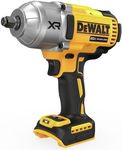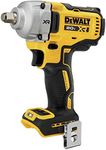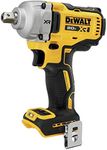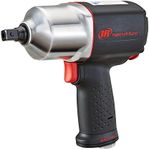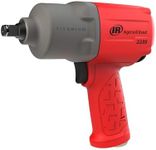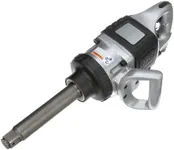Buying Guide for the Best Impact Wrenches
Choosing the right impact wrench can make your work much easier, whether you're a DIY enthusiast or a professional. Impact wrenches are powerful tools designed to loosen or tighten bolts and nuts quickly and efficiently. The key to picking the best one for you is understanding your typical tasks and matching the tool's features to your needs. Consider what kind of projects you'll be tackling, how often you'll use the tool, and where you'll be using it (garage, workshop, or on the go).Power SourceThe power source refers to how the impact wrench is powered—commonly by electricity (corded), battery (cordless), or compressed air (pneumatic). Corded models offer consistent power but require an outlet, making them best for stationary work. Cordless models provide portability and convenience, ideal for moving around or working in places without easy access to power. Pneumatic wrenches are very powerful and often used in professional garages, but they require an air compressor. Choose based on where and how you plan to use the tool most often.
TorqueTorque is the amount of turning force the wrench can deliver, usually measured in foot-pounds (ft-lbs) or Newton-meters (Nm). Higher torque means the tool can handle tougher, more stubborn bolts. Light-duty tasks like assembling furniture or working on bicycles need less torque, while automotive or heavy equipment work requires much more. For occasional home use, lower torque is sufficient, but for frequent or heavy-duty jobs, look for higher torque ratings.
Drive SizeDrive size refers to the size of the square fitting where sockets attach, commonly 1/4-inch, 3/8-inch, 1/2-inch, or 3/4-inch. Smaller drive sizes are lighter and better for tight spaces and lighter tasks, while larger sizes are heavier and suited for bigger, tougher bolts. Match the drive size to the type of work and the size of bolts you expect to handle most often.
Speed (RPM/IPM)Speed is measured in revolutions per minute (RPM) and impacts per minute (IPM). Higher speeds allow you to work faster, but too much speed can be hard to control for delicate tasks. If you need precision, look for models with variable speed control. For general use, a moderate speed is usually enough, but for heavy-duty or repetitive work, higher speeds can save time.
Weight and ErgonomicsWeight and ergonomics refer to how heavy the tool is and how comfortable it is to hold and use. Lighter tools are easier to handle for long periods, while heavier ones can be tiring but may offer more power. Ergonomic handles and balanced designs reduce strain and improve control. If you expect to use the wrench for extended periods, prioritize comfort and manageable weight.
Additional FeaturesSome impact wrenches come with extra features like LED lights, brushless motors, or adjustable torque settings. LED lights help in low-light areas, brushless motors offer better efficiency and longer life, and adjustable torque lets you fine-tune the power for different tasks. Consider which features will make your work easier or safer based on your typical projects.
